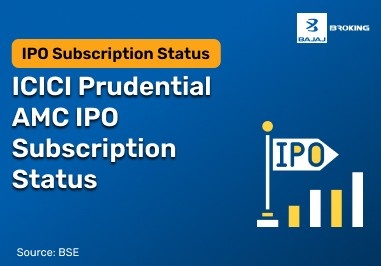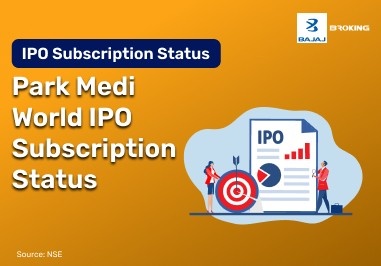Company Name
| Sector
| Market Cap (₹ Cr)
| Current Price (₹)
| P/E Ratio
| Dividend Yield (%)
| 6M Return (%)
|
Jindal Steel
| Steel
| 89,941.17
| 881.7
| 22.03
| 0.23
| -8.58
|
ICICI Lombard
| Insurance
| 88,903.59
| 1,793.4
| 35.44
| 0.33
| -11.26
|
JSW Energy
| Power Generation & Distribution
| 88,769.16
| 507.9
| 47.27
| 0.39
| -24.96
|
SRF
| Chemicals
| 88,642.88
| 2,990.4
| 77.29
| 0.24
| 28.58
|
Lupin
| Pharmaceuticals
| 88,445.78
| 1,937.2
| 30.83
| 0.41
| -11.13
|
Source: Screener
Overview of Mid Cap Stocks
This summary table provides a quick financial snapshot of the same top mid cap companies, highlighting quarterly profit, sales, return on capital employed, and profit growth trends.
Company Name
| Quarterly Profit (₹ Cr)
| Profit Change (%)
| Quarterly Sales (₹ Cr)
| Sales Change (%)
| ROCE (%)
| 5Y Profit Growth (%)
|
Jindal Steel
| 950.88
| -50.7
| 11,750.67
| 0.42
| 13.16
| 61.57
|
ICICI Lombard
| 509.59
| -1.91
| 6,051.16
| 12.24
| 24.86
| 16.00
|
JSW Energy
| 157.45
| -31.94
| 2,438.88
| -4.09
| 8.59
| 19.80
|
SRF
| 271.08
| 6.96
| 3,491.31
| 14.36
| 12.71
| 15.73
|
Lupin
| 858.86
| 39.48
| 5,767.71
| 10.97
| 15.72
| 21.04
|
Source: Screener
Jindal Steel & Power Ltd
Jindal Steel & Power Ltd is a prominent player in India's steel sector, recognized for its integrated operations across mining, steel production, and power generation. Despite being a large mid cap, the company has shown inconsistent growth in recent quarters, reflecting sectoral volatility and global steel price movements. Its profitability metrics remain moderate, with a stock P/E of 22 and ROCE of 13.2%. The firm has faced challenges in sales growth over the last five years, which has impacted investor sentiment.
Key Financial Indicators
Metric
| Value
|
Market Cap (₹ Cr)
| 89,941
|
Current Price (₹)
| 882
|
P/E Ratio
| 22.0
|
ROCE
| 13.2%
|
ROE
| 14.1%
|
Dividend Yield
| 0.23%
|
5-Year Sales Growth
| 1.40% (poor)
|
Source: Screener
Highlights
Diversified presence in steel and power sectors.
Low sales growth over five years.
Moderate returns on capital and equity.
ICICI Lombard General Insurance Company Ltd
ICICI Lombard is a leading player in the general insurance sector in India. It is nearly debt-free and maintains a strong dividend payout ratio of 26.5%. With a market capitalisation nearing ₹89,000 crore, the company has been part of major benchmark indices. However, its earnings growth has moderated in recent quarters. It maintains a high P/E ratio of 35.4, reflecting premium market valuations typical of financial services stocks.
Key Financial Indicators
Metric
| Value
|
Market Cap (₹ Cr)
| 88,904
|
Current Price (₹)
| 1,793
|
P/E Ratio
| 35.4
|
ROCE
| 24.9%
|
ROE
| 18.8%
|
Dividend Yield
| 0.33%
|
Dividend Payout Ratio
| 26.5%
|
Source: Screener
Highlights
Debt-free structure strengthens balance sheet.
Stable dividends and high ROCE.
Sluggish profit growth in recent quarters.
JSW Energy Ltd
JSW Energy operates in power generation and distribution, and has demonstrated strong 5-year profit CAGR of 19.8%. It also maintains a consistent dividend payout of over 20%. However, the company has a relatively low return on equity (8.4%) and trades at a high P/E of 47.3, making it more expensive relative to earnings. Additionally, promoter holding has declined in recent years, which may affect market perception.
Key Financial Indicators
Metric
| Value
|
Market Cap (₹ Cr)
| 88,769
|
Current Price (₹)
| 508
|
P/E Ratio
| 47.3
|
ROCE
| 8.59%
|
ROE
| 8.40%
|
Dividend Yield
| 0.39%
|
5-Year Profit CAGR
| 19.8%
|
Source: Screener
Highlights
Strong long-term profit growth.
Dividend-friendly company.
Low ROE and high valuation multiple.
SRF Ltd
SRF Ltd is a diversified chemical company involved in technical textiles, fluorochemicals, and packaging films. It trades at a high P/E of 77.3, and is priced at over 7 times its book value. Despite this, the company maintains decent ROCE and ROE figures and has a history of consistent dividend payouts (17.4%). However, valuation concerns and interest cost capitalization may weigh on investor sentiment.
Key Financial Indicators
Metric
| Value
|
Market Cap (₹ Cr)
| 88,643
|
Current Price (₹)
| 2,990
|
P/E Ratio
| 77.3
|
ROCE
| 12.7%
|
ROE
| 12.2%
|
Dividend Yield
| 0.24%
|
Dividend Payout Ratio
| 17.4%
|
Source: Screener
Highlights
Well-diversified chemical portfolio.
Strong dividend track record.
High market valuation raises caution.
Lupin Ltd
Lupin is a leading pharmaceutical company focused on generic and branded formulations. It has shown improved profitability in recent quarters, yet suffers from low 5-year sales growth and ROE of just 1.92% over the same period. The firm maintains a reasonable P/E of 30.8 and a dividend yield of 0.41%. While it has reduced debt, valuation multiples remain elevated relative to its book value.
Key Financial Indicators
Metric
| Value
|
Market Cap (₹ Cr)
| 88,446
|
Current Price (₹)
| 1,937
|
P/E Ratio
| 30.8
|
ROCE
| 15.7%
|
ROE
| 14.1%
|
Dividend Yield
| 0.41%
|
5-Year Sales Growth
| 6.41% (low)
|
Source: Screener
Highlights
Low ROE despite profitability recovery.
Reasonable P/E with stable dividends.
Stock trades at 5.65x its book value.
How to Invest in Mid Cap Stocks?
1. Open accounts: Trading account and demat account for equity transactions.
2. Research: Analyze financials (ROE >15%, debt/equity <1).
3. Diversify: Allocate 10-20% of the portfolio to mid-caps.
4. Monitor: Track quarterly results and insider activity.
5. Use tools: Brokerage calculator to estimate costs, MTF for leveraged plays.
For passive exposure, consider Nifty Midcap 150 ETFs or sector-specific mutual funds.
Conclusion
Mid-cap stocks in India offer a compelling blend of growth potential and moderate risk, making them ideal for investors targeting long-term capital appreciation. Their ability to outperform large-caps during economic expansions, coupled with sectoral diversity across renewables, technology, and manufacturing, positions them as critical drivers of market dynamism. However, volatility and liquidity constraints necessitate disciplined portfolio allocation (10–20%) and rigorous fundamental analysis (ROE, debt ratios). Government policies like PLI schemes and infrastructure spending further amplify opportunities, while overvaluation risks in defense and railways demand caution. For passive investors, Nifty Midcap 150 ETFs provide diversified exposure, whereas active traders can leverage intraday trading strategies on liquid counters.
Other Popular Stocks in India
Here’s a look at some of the most prominent mid cap and upper mid cap companies across key sectors in India, each playing a vital role in its respective industry.
IDBI Bank: IDBI Bank has shown a significant turnaround in profitability and operational performance, drawing attention for its steady financial recovery and improving fundamentals.
Info Edge (India): Info Edge continues to be a key digital sector player with interests in job portals, real estate classifieds, and tech investments, known for its strategic stakes in emerging tech ventures.
Canara Bank: Canara Bank remains a prominent public sector bank, benefiting from credit growth and banking sector consolidation, while expanding its retail and MSME lending footprint.
SBI Cards: SBI Cards stands out in the credit card segment with a large customer base and consistent product innovation, maintaining its leadership in the non-banking financial services space.
ICICI Prudential Life: ICICI Prudential Life is a well-known private sector insurer, offering a diversified product portfolio across protection, savings, and annuity plans, backed by a strong brand presence.
NHPC Ltd: NHPC is a leading hydropower generation company, known for its role in renewable energy and infrastructure development within India's public sector enterprise framework.
Dabur India: Dabur India holds a strong presence in the FMCG sector, leveraging its legacy in ayurvedic and natural products across health supplements, personal care, and packaged foods.
Muthoot Finance: Muthoot Finance commands a dominant position in the gold loan market, recognized for its wide branch network and strong customer base in the secured lending segment.
Zydus Lifesciences: Zydus Lifesciences is a key pharmaceutical firm with a diverse product portfolio in generics, wellness, and vaccines, with growing traction in both domestic and international markets.
HPCL (Hindustan Petroleum Corp Ltd): HPCL plays a crucial role in India's petroleum refining and marketing segment, actively expanding its retail network and refining capacity to meet energy demand.
These companies continue to attract market interest due to their scale, sectoral relevance, and evolving business dynamics in India’s economic landscape.














